Ecological Monitoring
Conservation that integrates active resource management requires site specific current information. NwCs ecological monitoring projects involve local people in collecting and providing this knowledge.
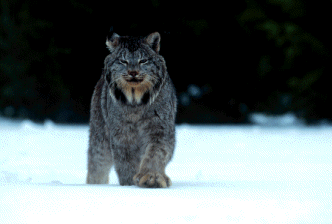
Canada lynx (Lynx canadenisis)
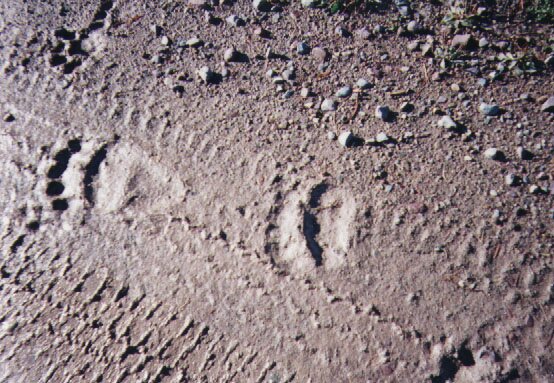 Grizzly bear monitoring
Grizzly bear monitoring
The Swan Valley is fortunate to have a cooperative agreement between federal agencies and private timber companies to maintain and restore habitat linkages for the grizzly bear.
Using track surveys, remote camera sets, hair traps and other non-intrusive methods, NwC documents the continued use of this ecosystem by the grizzly.
Northern Divide Grizzly Bear Project
Northwest Connections was a partner in this effort to census grizzly bears across the entire Northern Continental Divide Ecosystem (NCDE). The NCDE ecosystem includes Glacier National Park, the Bob Marshall Wilderness Complex, the Mission Mountains Wilderness and all of the surrounding lands along the Rocky Mountain Front, and in the Blackfoot, Swan, Mission and Flathead Valleys.
Northwest Connections was in charge of collecting data across the Mission/Swan Subunit. The main field season for this project was the summer of 2004. An emphasis was placed on hiring qualified local residents.
Carnivore snow track surveys: lynx, fisher, marten, and wolverine
Carnivores can be good indicators of the integrity of the food web because they consume and therefore are dependent upon prey species, which in turn are dependent upon the health of our forests, rivers and grasslands.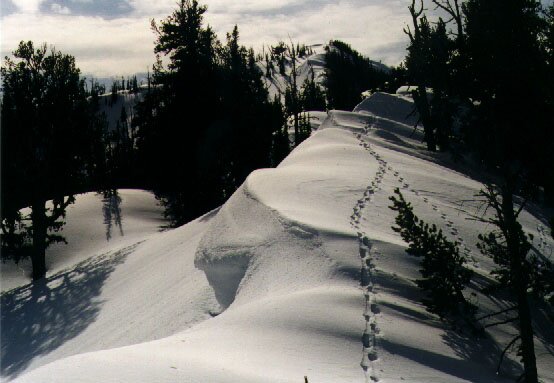
NwC surveys track transects throughout our ecosystem; the surveys are designed to monitor the presence, distribution and relative abundance of rare carnivores including lynx, fisher, pine marten, wolverine and wolf. We also document the movement and habitat selection of our more common carnivores: coyote, bobcat, weasel, otter, mink and mountain lion.
Using protocol established by Zielinski and Kucera, our team of field ecologists uses the optimum tracking conditions of winter to monitor furbearers.
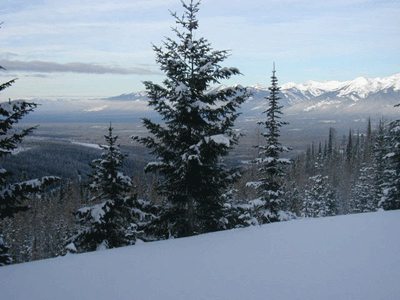
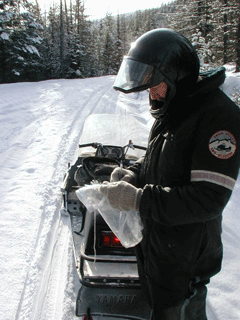
Road/trail monitoring
The number one cause of habitat fragmentation is the vast network of human transportation routes. Roads and trails crisscross the countryside and in many cases compromise security for wildlife.
NwC, in conjunction with the Forest Service, monitors open and closed roads and trails, addresses erosion problems, weed infestations, and use by both human and animals.
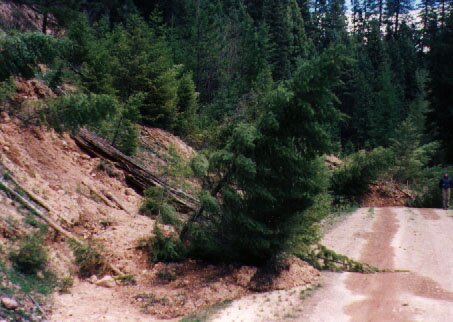 Most of the work is accomplished within the context of a national pilot program in stewardship contracting through the US Forest Service and Pinchot Institute. During the summer, NwC organizes several volunteer and adopt-a-trail programs offering you the opportunity to explore the rugged Swan Range and assist with important conservation work.
Most of the work is accomplished within the context of a national pilot program in stewardship contracting through the US Forest Service and Pinchot Institute. During the summer, NwC organizes several volunteer and adopt-a-trail programs offering you the opportunity to explore the rugged Swan Range and assist with important conservation work.
High elevation whitebark pine inventory and restoration 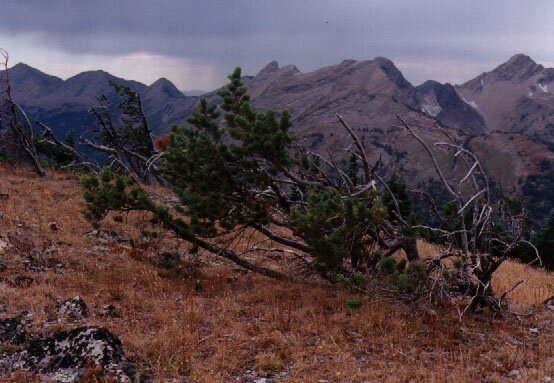
As a keystone species, the whitebark pine tree provides food for bears, squirrels and birds, provides soil stability on steep mountain slopes and helps regulate snow melt. These trees are quickly disappearing due to the cumulative effects of white pine blister rust, mountain pine beetle and the lack of fire in the high mountains.
NwC maps the remaining stands to assist with developing a restoration strategy for this species and the processes which depend upon it.
NwC, in conjunction with the Flathead National Forest, also plants whitebark pine seedlings to aid in habitat restoration.
Amphibian monitoring in Swan Valley wetlands
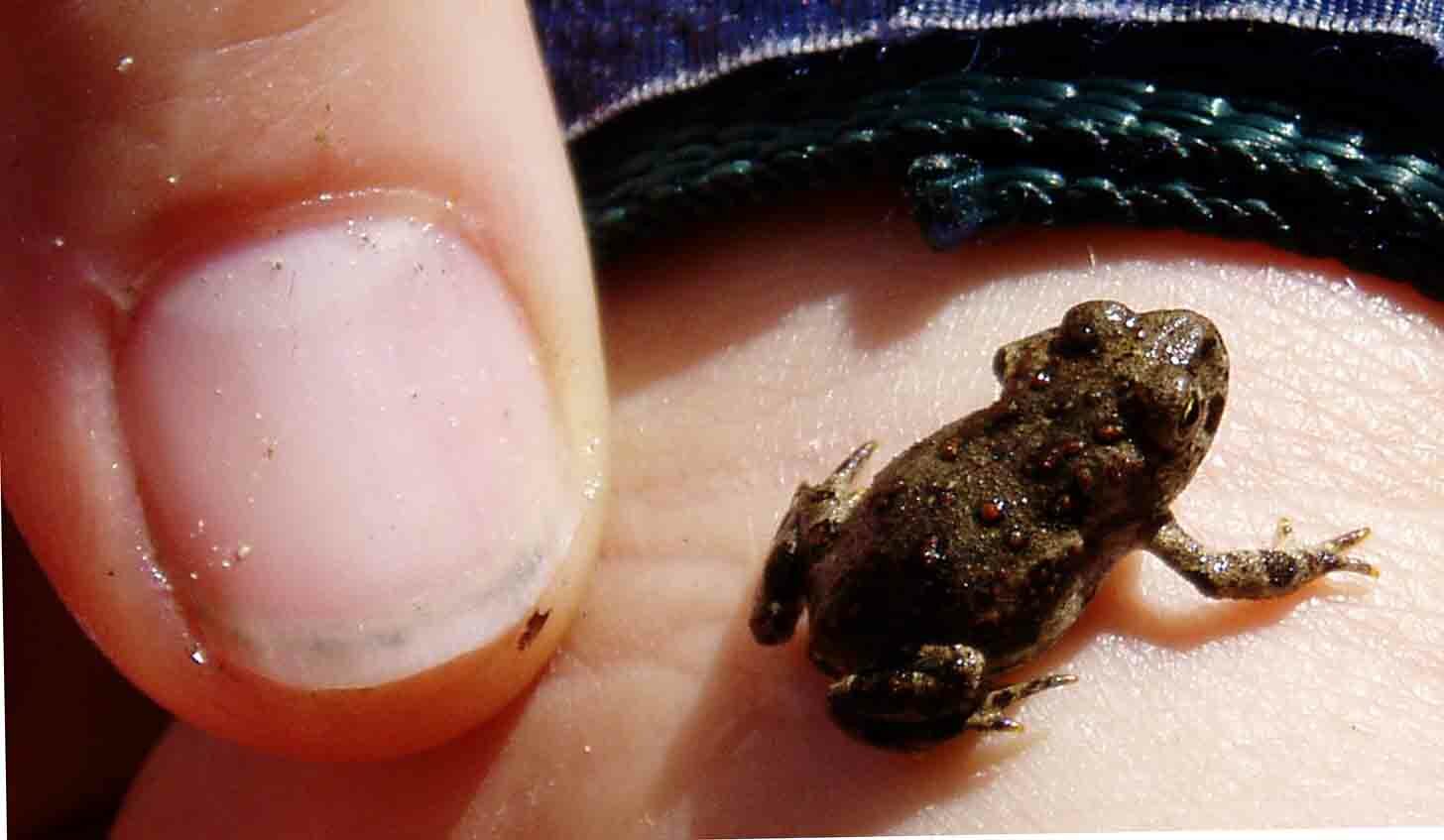 Amphibian populations worldwide have declined over the past decade or two, several to the point of extinction. Western toads appear to be disappearing in western Montana, heightening the need to identify and protect breeding sites.
Amphibian populations worldwide have declined over the past decade or two, several to the point of extinction. Western toads appear to be disappearing in western Montana, heightening the need to identify and protect breeding sites.
Through its high school volunteer program, the Wildlands Volunteer Corps, NwC has surveyed more than 90 wetlands in the Swan Valley over the past 5 years for western toads. During surveys, the WVC documented the first known instance of deformities in spotted frogs in the Valley. The work of NwC continues to provide land managers with valuable baseline information about the distribution and abundance of amphibians and reptiles in the valley.
© Copyright 2007 Northwest Connections. All rights reserved.
Slot Depo 5k dengan Fitur Lengkap
Meskipun hanya dengan Slot Depo 5k, Anda tetap bisa menikmati fitur-fitur canggih yang biasanya tersedia di permainan dengan deposit lebih besar. Fitur seperti free spin, bonus jackpot, dan grafis berkualitas tinggi memastikan pengalaman bermain tetap maksimal meskipun dengan modal kecil.
RTP Slot Tertinggi Hari Ini memberikan kesempatan terbaik bagi pemain untuk menang. RTP slot gacor yang tinggi memastikan bahwa sebagian besar taruhan yang ditempatkan akan kembali ke pemain dalam bentuk kemenangan. Slot dengan RTP tertinggi selalu menjadi pilihan yang cerdas bagi mereka yang ingin meningkatkan peluang menang tanpa perlu mempertaruhkan modal besar.
Dalam Mahjong Ways 2, pemain dapat menikmati lebih banyak cara untuk menang berkat fitur-fitur baru yang dihadirkan. Slot ini dilengkapi dengan simbol-simbol khas Mahjong yang memberi kesempatan untuk memenangkan hadiah besar. Dengan RTP tinggi dan tampilan yang memukau, Mahjong Ways 2 menjadi pilihan utama bagi para pencinta game slot bertema Mahjong.
Bermain di Dunia Slot Menawarkan Pengalaman Hiburan yang Tidak Ada Duanya dengan Slot Online
Bermain di dunia slot menawarkan pengalaman hiburan yang tidak ada duanya, terutama saat memilih situs yang menyediakan Slot Online. Dengan grafis yang menarik dan berbagai jenis tema permainan, slot online menjadi pilihan populer di kalangan pemain. Keuntungan bermain di platform slot online adalah kemudahan akses dan fleksibilitas waktu yang ditawarkan kepada para pemain. Jika Anda ingin merasakan sensasi kemenangan besar, slot online adalah tempat yang tepat untuk dicoba.
Banyak pemain slot online mencari pengalaman bermain yang adil dan menguntungkan. Toto Slot hadir sebagai pilihan utama dengan berbagai permainan menarik dan peluang menang tinggi. Selain itu, sistem keamanan yang canggih memastikan transaksi berjalan lancar dan aman, sehingga pemain bisa menikmati permainan tanpa khawatir akan risiko keamanan atau kecurangan.
Menjadi salah satu platform paling populer, Situs Toto menyajikan berbagai pilihan permainan togel dengan tingkat keamanan yang tinggi. Para pemain bisa merasa tenang saat melakukan transaksi atau taruhan di platform ini.
Slot777 Pilihan Terbaik dengan Jackpot Progresif Menguntungkan
Keunggulan utama dari Slot777 adalah kemampuannya dalam memberikan hadiah besar dengan taruhan kecil. Banyak pemain telah membuktikan bahwa slot ini sering memberikan kemenangan besar berkat sistem fair play yang diterapkan. Jika Anda mencari permainan yang seru dan menguntungkan, game ini bisa menjadi pilihan tepat.
Banyak orang kini beralih ke sistem praktis seperti Depo 10k yang menawarkan cara bermain fleksibel dengan biaya rendah, cocok untuk hiburan sehari-hari.
Popularitas slot gacor Thailand terus meningkat karena reputasinya yang memberikan kemenangan lebih sering, memungkinkan pemain untuk mengoptimalkan strategi taruhan sambil tetap merasakan keseruan setiap putaran tanpa rasa cemas kehilangan peluang besar.
Kombinasi Angka dan Strategi Taruhan dalam Toto Macau
Bermain Toto Macau tidak hanya sekadar mengandalkan keberuntungan semata, tetapi juga strategi yang matang. Pemain berpengalaman sering kali memanfaatkan pola angka yang muncul dari hasil sebelumnya untuk meningkatkan peluang mereka. Dengan pemahaman mendalam terhadap pola dan sistem permainan, bettor dapat menghindari kesalahan umum dan memaksimalkan peluang menang di setiap taruhan.
Informasi asli dari Keluaran macau selalu dirujuk oleh pemain berpengalaman, sebab tanpa data resmi mereka tidak bisa memastikan validitas angka yang beredar di komunitas.
Para pemain yang serius sering hanya memilih Togel Resmi karena mereka ingin menghindari risiko penipuan dan memastikan setiap taruhan mereka dihitung dengan sistem yang terpercaya dan fair.
Related Links:
Togel178
Pedetogel
Sabatoto
Togel279
Togel158
Colok178
Novaslot88
Lain-Lain
Partner Links
- Tidak ada sistem pembayaran Sabatoto yang lebih aman untuk para pemain kami.
- Pasaran toto Hongkong Sabatoto sangat terkenal, tidak kalah dengan Taiwan atau Macau.
- Alasan dibuatnya www.resea-rchgate.net situs togel terpercaya kami dengan pasaran singapore resmi, data keluaran terkini.
- Pasaran resmi ada di Rtp Togel178 situs toto ini untuk digunakan dalam taruhan.
- Anda bisa unduh Apk di situs resmi atau bandar bandar togel resmi togel online tepercaya.
- Sebagai platform judi www.thedispensarypub.com terkemuka, situs togel ini menawarkan permainan online yang lengkap.
- Pastikan baca syarat Togel 279 bonus di situs judi sebelum deposit demi maksimal manfaat.
- Semua orang bisa menemukan taruhan Togel158 menarik untuk kepuasan dan keamanan bermain yang maksimal.
- Anda dapat mempersiapkan strategi bertaruh dengan lebih baik jika Togel158 tahu jadwal pertandingan.
- Semua orang bisa Togel178 menemukan layanan lengkap dengan kualitas terbaik yang memuaskan pengguna.
- Mereka bahas topik beragam: nomor pintar, kelola bankroll, dan taktik permainan macauindo.co canggih.
- Anda butuh kuasai teknik https://pedetogel.net/ ampuh ini hadapi tantangan.
- Pastikan pahami nilai Mainan dan cara menghitung total nilai di Togel178 tangan Anda dengan baik.
- Beberapa metode untuk deposit di situs Togel178 Permainan Digital aman bagi pemain di Bo Kompetisi terbesar Indonesia.
- Informasi pribadi dijaga Pedetogel dengan ketat, data anggota tetap aman dari kebocoran.
- Bagi para pemula yang https://www.recycledmanspeaks.com/videos ingin mencoba sepakbola, informasi ini bisa bermanfaat.
- Dalam game online, pikiran dan www.saintjohnsbrooklyn.com analisis taruhan diperlukan untuk meraih kemenangan.
- Pilihlah agen dengan reputasi bagus, gunakan https://kampuspoker.com/ platform aman, serta fasilitas terbaik untuk anggota.
- Tetapi tanpa kesabaran dan disiplin, strategi mungkin situs togel tidak sesuai dengan harapan yang diinginkan.
- Menawarkan layanan Togel158 prediksi harian yang memuaskan dan customer service handal yang kompeten.
- Agen perjudian bertindak sebagai penghubung antara Anda dan Togel178 platform judi sportsbook.
- Anda dapat menerapkan strategi lain yaitu Slot Gacor mengelola keuangan Anda dengan cerdas.
- Permainan permainan kartu tidak hanya sekadar omong kosong, banyak yang mendapat manfaat situs idn poker tanpa bekerja.
- Keunggulan utama Colok178 adalah pasaran togel yang beragam, mulai dari Singapura, Hongkong, hingga Sydney. Pemain bisa memilih pasaran sesuai preferensi dengan kemudahan akses sepanjang waktu. Selain itu, Colok178 menyediakan tips dan prediksi yang akurat untuk meningkatkan peluang menang.
- Mencari platform yang memiliki pelayanan terbaik menjadi langkah penting agar pengalaman bermain tetap menyenangkan. Itulah sebabnya banyak pemain memilih Pedetogel karena memiliki customer service yang siap membantu kapan saja.
- Salah satu hal yang membuat bettor tertarik adalah tingkat kemenangan tinggi dan peluang jackpot yang besar. Pedetogel menawarkan berbagai pilihan taruhan dengan payout tinggi, memungkinkan pemain untuk meraih keuntungan lebih besar dibandingkan situs lainnya.
- Keamanan dalam bermain togel online adalah aspek yang tidak bisa diabaikan oleh para pemain. Pedetogel memastikan bahwa semua transaksi dilakukan dengan enkripsi tingkat tinggi, menjaga kerahasiaan data pengguna. Selain itu, sistem yang stabil membuat permainan berjalan lancar tanpa gangguan teknis. Dengan dukungan layanan pelanggan 24 jam, pemain bisa mendapatkan bantuan kapan pun mereka membutuhkannya. Semua keunggulan ini menjadikan situs ini sebagai pilihan utama para bettor.
- Salah satu hal yang membuat situs macau menonjol adalah keberagaman pilihan pasaran yang mereka tawarkan. Dari pasaran Hongkong hingga Singapura, pemain dapat memilih sesuai preferensi mereka untuk meningkatkan peluang menang.
- Keamanan dan kenyamanan dalam bermain togel online sangat bergantung pada platform yang digunakan. Oleh karena itu, pastikan Anda bermain di situs togel resmi yang memiliki lisensi resmi dari badan pengawas perjudian. Situs terpercaya selalu menghadirkan pengalaman bermain yang lebih aman dengan sistem yang transparan. Selain itu, pelayanan pelanggan yang profesional siap membantu setiap kendala yang mungkin dihadapi oleh pemain kapan saja.
- Metode pembayaran fleksibel sangat membantu pemain dalam melakukan transaksi dengan nyaman. Dari transfer bank, e-wallet, hingga QRIS kini tersedia dalam banyak situs. Salah satunya adalah Toto92, yang menyediakan semua metode pembayaran tersebut dengan proses instan.
- Bagi pemain yang mengincar hadiah besar, memilih situs dengan jackpot tinggi tentu menjadi strategi yang masuk akal. Di sinilah Toto92 menawarkan keunggulannya dengan berbagai pilihan jackpot progresif. Hadiah besar ini menjadi daya tarik utama bagi banyak pemain yang ingin mendapatkan cuan maksimal. Selain itu, peluang menang juga tergolong adil.
- Setiap orang pasti ingin mendapatkan layanan daring yang bebas hambatan. Salah satu platform yang memenuhi ekspektasi ini adalah Togel279, dengan navigasi yang mudah dan tampilan yang bersih. Hal ini membantu pengguna untuk langsung fokus pada fitur yang mereka butuhkan. Tidak heran jika banyak yang menjadikannya sebagai platform pilihan utama.
- Layanan hiburan online yang ideal tidak hanya mengandalkan tampilan menarik, tetapi juga kelengkapan fitur. Sabatoto menjadi contoh nyata karena menghadirkan ragam pilihan yang bisa diakses kapan saja. Platform ini pun terus diperbarui untuk menyesuaikan kebutuhan pasar.
- Aspek legalitas sering kali menjadi pertimbangan utama sebelum bergabung dalam suatu platform digital. Kabar baiknya, Sabatoto beroperasi secara sah dan telah memiliki izin yang relevan. Ini menjamin bahwa seluruh aktivitasnya berada dalam jalur yang benar.
- Menghadirkan kemudahan akses dari berbagai perangkat adalah hal penting. Dengan pendekatan multi-platform, Pedetogel menjamin kenyamanan akses dari smartphone maupun desktop.
- Situs Togel178 menyediakan pasaran togel resmi seperti Singapore, Hongkong, hingga Toto Macau dengan hasil yang selalu update real time.
- Ketika teman saya menceritakan bahwa Pedetogel menyediakan pasaran terlengkap, saya jadi penasaran dan membuktikannya sendiri, ternyata memang benar dari pasaran lokal hingga internasional tersedia.
- Pemilihan Togel158 sebagai partner judi online semakin populer karena sistem transaksi yang cepat dan aman, menghindarkan pengguna dari berbagai risiko penipuan atau kendala dalam proses deposit dan withdraw.
- Banyak bettor menyukai desain minimalis dari Sabatoto yang membuat pengalaman bermain lebih nyaman, baik melalui perangkat desktop maupun smartphone.
- Dengan fitur mobile friendly, Togel178 memudahkan pemain yang sering bermain lewat ponsel sehingga di tengah aktivitas luar ruangan, mereka tetap bisa pasang angka tanpa kendala.
- Ketika ingin mencari situs dengan pasaran terlengkap, Togel178 hadir memberikan lebih dari 20 pasaran aktif yang bisa diakses setiap hari oleh semua member.
- Banyak komunitas togel online yang merekomendasikan Pedetogel sebagai tempat bermain terbaik karena kecepatan transaksi dan keamanannya yang tidak diragukan lagi.
- Semua member baru di Pedetogel mendapatkan akses ke tutorial bermain sehingga lebih mudah memahami sistem taruhan yang ada.
- Jika ingin mencari situs yang menawarkan pasaran togel terlengkap, maka Sabatoto adalah pilihan yang paling direkomendasikan oleh banyak pemain.
- Banyak pemain yang berhasil meraih jackpot besar di Sabatoto membuktikan bahwa situs ini benar-benar memberikan peluang kemenangan yang nyata dan bukan sekadar janji kosong.
- Platform terpercaya seperti Togel279 selalu berupaya memberikan pelayanan maksimal termasuk sistem customer service 24 jam untuk menjawab segala pertanyaan pemain.
- Platform Togel279 mudah diakses dari berbagai perangkat baik desktop maupun smartphone, memudahkan pemain untuk bertaruh kapan saja tanpa batasan waktu.
- Dengan layanan bo togel deposit pulsa, Togel158 memudahkan pemain melakukan transaksi tanpa harus memiliki rekening bank, sehingga semakin fleksibel dan praktis.
- Para pemain yang memilih Togel158 akan dimanjakan dengan berbagai metode pembayaran yang mudah, cepat, dan aman sehingga aktivitas deposit dan withdraw dapat dilakukan tanpa repot dan dengan waktu singkat.
- Banyak pemain lama bertahan karena Colok178 selalu menjaga konsistensi dalam hal pelayanan, keamanan data, dan pemberian bonus yang sesuai janji.
- Para pemain merasa lebih bersemangat karena Togel279 menyiapkan bonus spesial yang bisa meningkatkan peluang kemenangan tanpa mengurangi keseruan permainan.
- Para pemain bersemangat mencoba strategi baru agar Pedetogel bisa memberikan hasil maksimal sesuai prediksi angka yang telah dianalisis.
- Keberagaman permainan menjadi daya tarik tersendiri, dan para gamer merasakan sensasi berbeda setiap kali mencoba fitur unik yang ditawarkan Jktgame.
- Kesempatan untuk mendapatkan bonus mingguan dan promosi menarik selalu menjadi daya tarik utama bagi anggota baru maupun lama yang bermain melalui Sbobet88, sehingga loyalitas pengguna meningkat.
- Meskipun risiko lebih besar, menggunakan slot bet 200 membuat permainan semakin menantang karena setiap kemenangan terasa lebih memuaskan dan memberikan reward yang lebih menggiurkan.
- Setelah itu, mereka bisa mulai menikmati permainan tanpa jeda sebab integrasi Pedetogel membuat transisi bermain terasa lebih stabil, cepat, dan nyaman.


Grizzly bear monitoring


Most of the work is accomplished within the context of a national pilot program in stewardship contracting through the US Forest Service and Pinchot Institute. During the summer, NwC organizes several volunteer and adopt-a-trail programs offering you the opportunity to explore the rugged Swan Range and assist with important conservation work.
 Amphibian populations worldwide have declined over the past decade or two, several to the point of extinction. Western toads appear to be disappearing in western Montana, heightening the need to identify and protect breeding sites.
Amphibian populations worldwide have declined over the past decade or two, several to the point of extinction. Western toads appear to be disappearing in western Montana, heightening the need to identify and protect breeding sites.